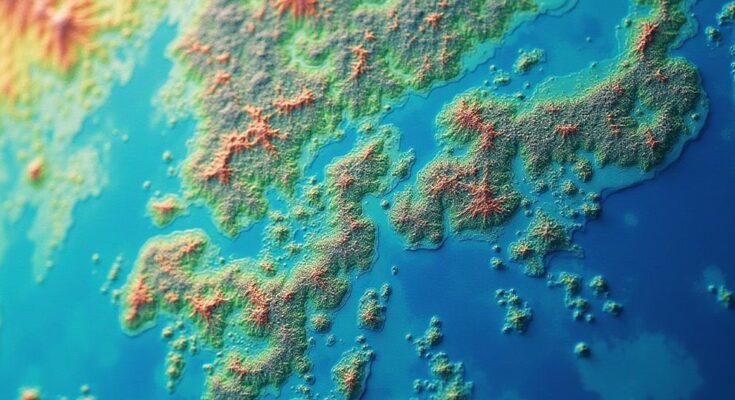In 2024, Earth faced record high temperatures and extreme weather patterns, driven by climate change and leading to severe storms like Hurricane Beryl and Hurricane Helene. NASA is using climate satellites to monitor these changes, revealing alarming ice melting and rising sea levels, which pose a significant threat to coastal communities. Experts urge urgent action and policy changes to mitigate the impacts of these climate crises.
In the year 2024, the Earth experienced unprecedented climate extremes, as recorded by various sources, including NASA and Space.com. July marked the hottest month in over 175 years, with July 22 being the hottest day ever documented. Concurrently, the Northern Hemisphere faced extreme weather conditions, with the emergence of Hurricane Beryl, the earliest Category 4 hurricane on record. In contrast, South Africa experienced an unusually harsh winter, characterized by record-breaking rainfall and rare snowfall. The situation is exacerbated by a report published in June highlighting an alarming rise in human-induced global warming. This phenomenon is driving increased planetary temperatures and unprecedented glacier melting, subsequently leading to rising sea levels that threaten coastal communities. Notably, Hurricane Helene wreaked havoc along the southeastern coast of the United States, followed by Hurricane Milton affecting South Florida. Both events underscore a connection between the escalating intensity of storms and climate change, mirrored by the increasingly severe weather patterns impacting South Africa’s coasts, which are confronted with a relentless cycle of flooding and drought. To combat these challenges, NASA, alongside other space agencies, is utilizing climate satellites to monitor the effects of climate change on weather patterns. By employing satellite gravimetry—an advanced technique for assessing ice mass loss, rising oceans, and alterations in groundwater supply—scientists are gaining insights into the crisis at hand. Cedric David, a scientist at NASA’s Jet Propulsion Laboratory, remarked on the remarkable capabilities of satellites in detecting changes in underground water reserves that would otherwise require extensive excavation to observe. Warnings about rising sea levels and their ensuing dangers for coastal cities continue to flow from scientists and organizations such as the Intergovernmental Panel on Climate Change, which predicts possible sea level increases between 0.43 meters and 0.85 meters by the year 2100. While this range may appear modest, the potential repercussions for coastal regions could be devastating. There remains hope that data collected from climate satellites will encourage fundamental changes in climate policy, urging officials to adopt measures aimed at curbing pollution in an effort to mitigate global heating. David further emphasized the significance of continuous satellite operations since 1992, which have provided irrefutable evidence of the oceans’ consistent rise due to climate change. It is recommended that residents of coastal towns undertake appropriate measures to enhance their resilience against the increasing likelihood of extreme weather events.
The topic presented here centers on the catastrophic impact of climate change as evidenced by recent events in 2024. With record-breaking temperatures and destructive hurricanes manifesting around the globe, this article encapsulates the prevailing dangers faced by coastal communities. Furthermore, it highlights the use of climate satellites in monitoring these environmental changes and emphasizes the urgent need for policy adaptations to combat ongoing climate-related threats. The convergence of scientific data, expert insights, and alarming predictions forms a crucial narrative regarding the future of our planet.
In conclusion, the year 2024 has emerged as a pivotal moment for climate awareness, evidenced by escalating temperatures and catastrophic weather patterns affecting both the Northern Hemisphere and South Africa. The utilization of satellite technology by NASA and other agencies represents a significant advancement in understanding climate dynamics and plant safety. Urgent action is imperative for coastal communities at risk, with the collective hope that enhanced scientific data will drive essential policy changes to address the pressing issue of climate change.
Original Source: www.2oceansvibe.com




